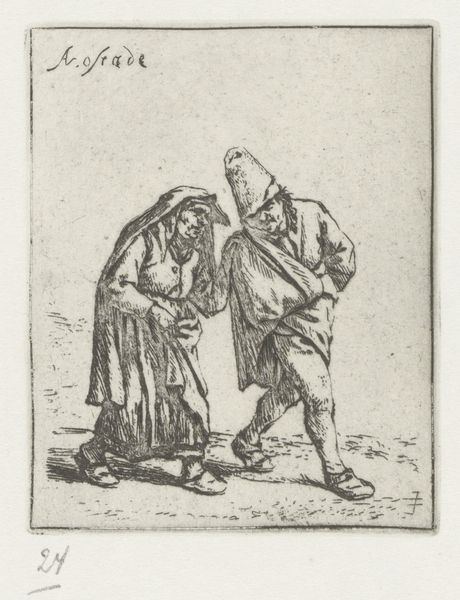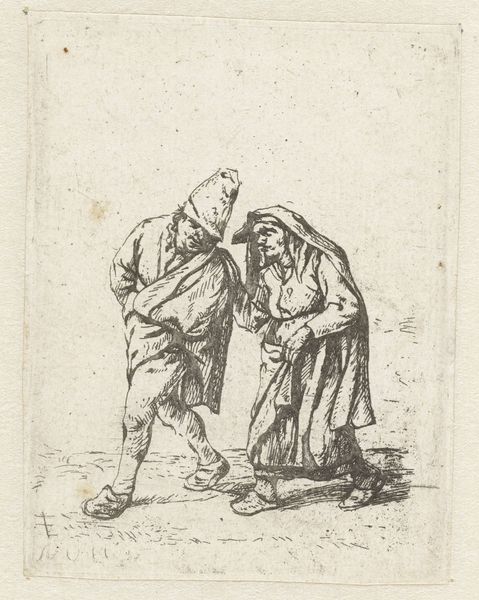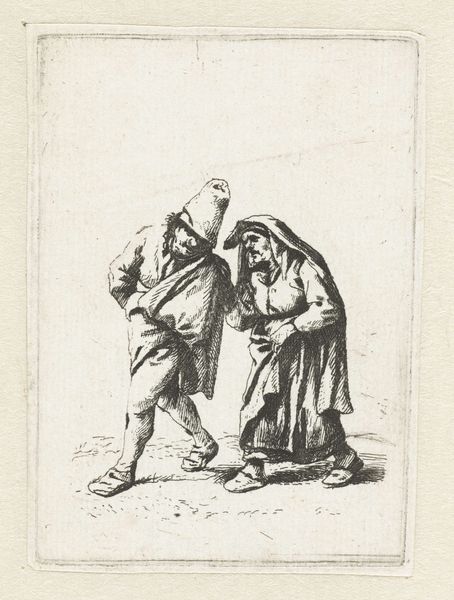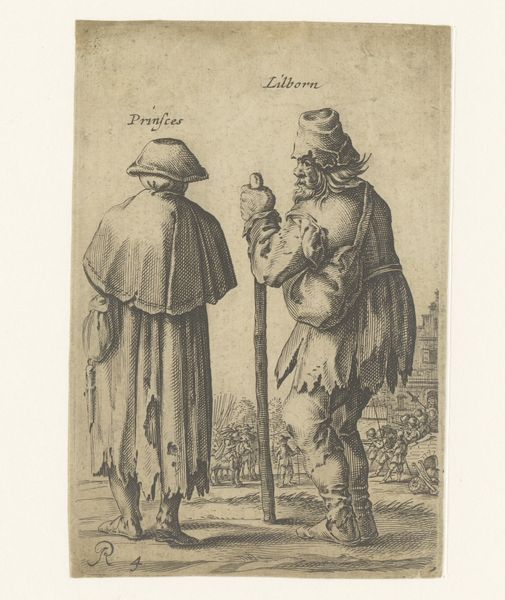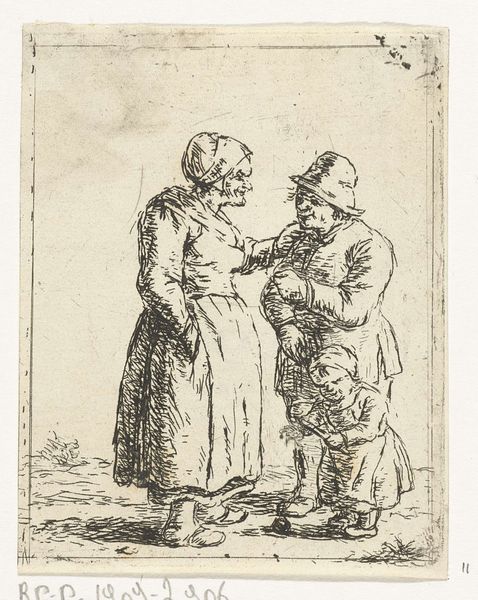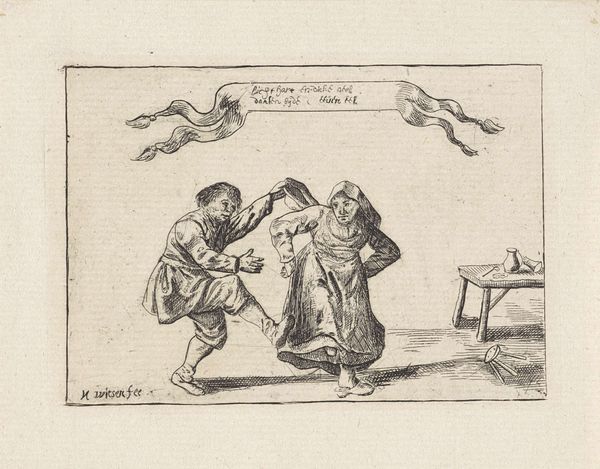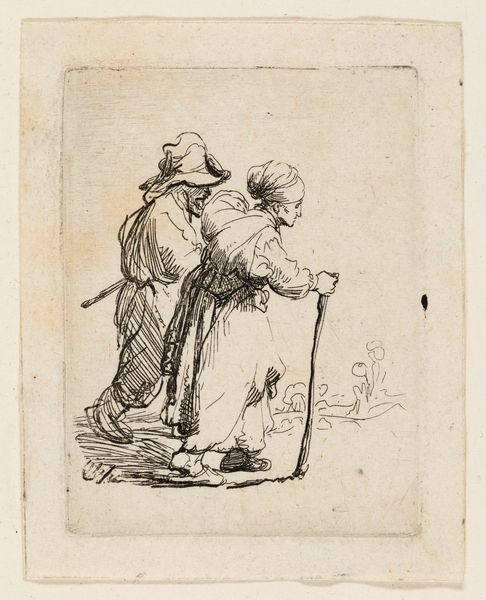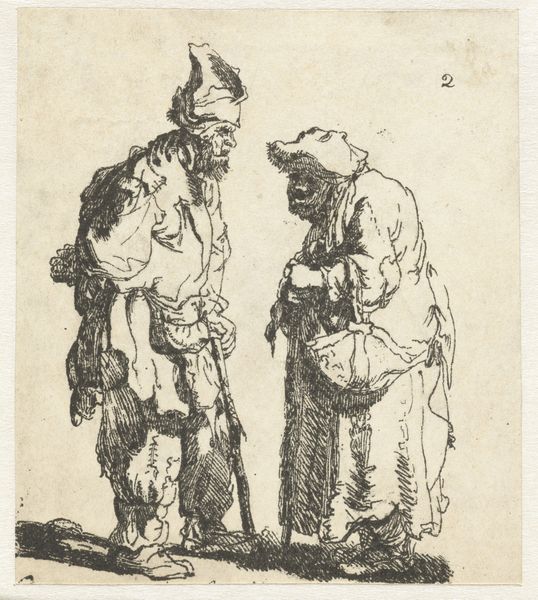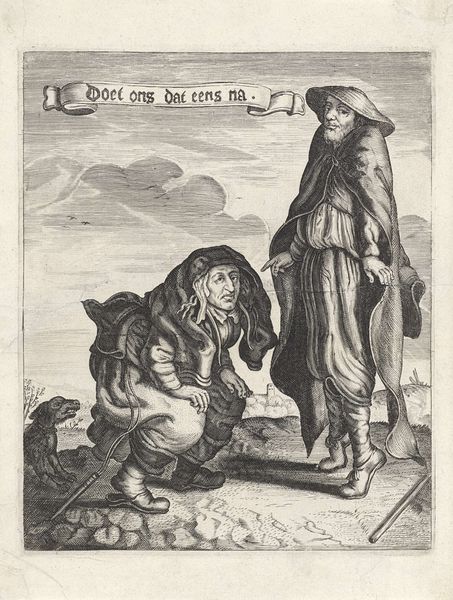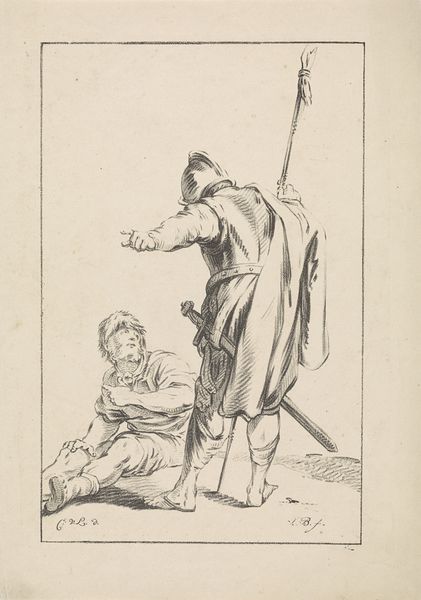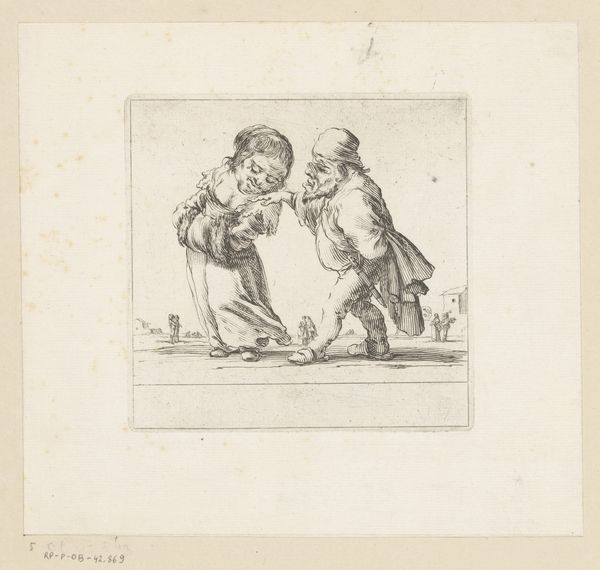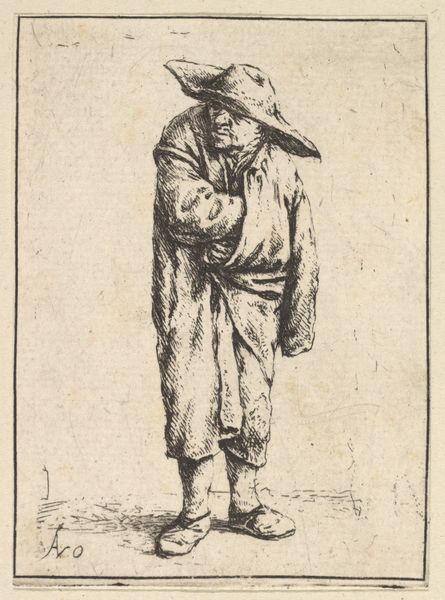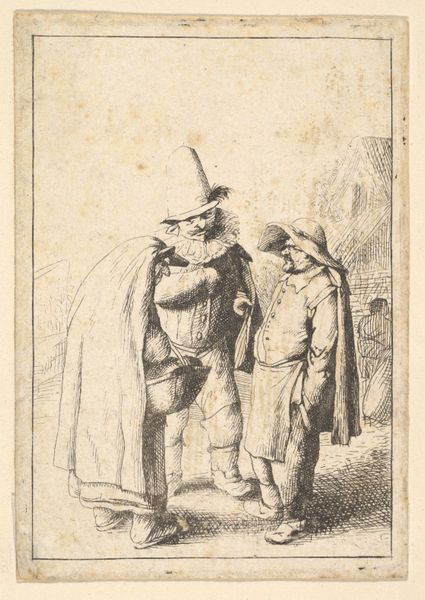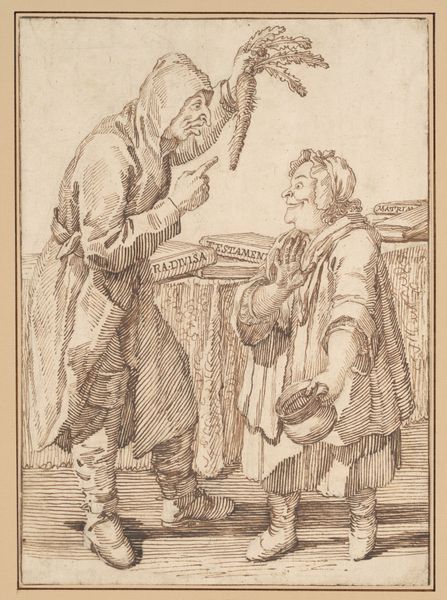
drawing, print, etching
#
drawing
#
dutch-golden-age
# print
#
etching
#
genre-painting
Dimensions: Sheet: 3 3/16 × 2 5/8 in. (8.1 × 6.7 cm)
Copyright: Public Domain
Curator: This etching, titled "Man and Woman Walking," was created by Adriaen van Ostade sometime between 1610 and 1685. It resides here at the Metropolitan Museum of Art. What's your first impression? Editor: They appear burdened, almost comically so. The weight of their journey is etched into their very postures, isn't it? It's rather endearing and speaks to their character. Curator: Absolutely. Van Ostade was renowned for his genre scenes, portraying the lives of ordinary people, especially peasants. This work embodies that. The way he captures their clothing, worn and simple, speaks volumes about their social standing. Editor: The pointed hat the man wears immediately draws my eye. It's like a fool's cap, a symbol of humility or perhaps even ridicule in some contexts. And the woman, wrapped tightly in her cloak, could represent steadfastness or even protectiveness. Their clothes symbolize so much, but does their clothing identify them as from a specific religious sect of the era? Curator: That is a curious element to note about these figures, their religion and culture! There's not a lot to verify this one way or the other though. I suggest instead thinking about the social aspect; consider their depiction as not about individual identity, but rather societal hierarchies, particularly the perceived virtues and follies of the working class during the Dutch Golden Age. Such prints were circulated widely and would have been consumed by varied social strata. Editor: Ah, so less about specific identifiers, more about conveying social types. So what does that convey to our perception of cultural memory today when viewing this scene and recognizing it's period artwork? Curator: It reveals how visual imagery contributes to creating and preserving cultural narratives, particularly stereotypes. This artwork speaks to how our collective memories become mediated through art, as these simple peasants represent enduring archetypes that shape perceptions across time. Editor: Food for thought. The next time I find myself weighed down, perhaps I'll consider the cultural implications of my attire. Curator: A sentiment Ostade, I believe, would appreciate!
Comments
No comments
Be the first to comment and join the conversation on the ultimate creative platform.
